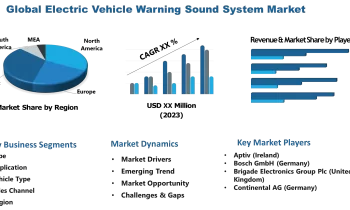Where data rules supreme, cyber threats are inevitable.
It is therefore imperative that you have effective cybersecurity systems in place.
The synergy between cybersecurity and regulatory compliance has become an unbreakable bond. It’s not just a matter of choice anymore – it’s a necessity. Companies of all sizes, from small startups to global conglomerates, are realizing that investing in robust cybersecurity measures isn’t just about protecting their data, it’s about staying on the right side of the law.
In this article, we will explore the dynamic interplay between cybersecurity and regulatory compliance. We’ll delve into why this partnership is essential, how it has evolved over the years, and the benefits it offers in an ever-evolving digital landscape.
How Did Regulatory Complexity Become Associated With The Digital Age?
The digital age brought with it immense opportunities for businesses to expand and innovate. But it also ushered in a new era of threats, where data breaches, cyberattacks, and information theft became all too common. As such, several key factors have contributed to the association of regulatory complexity with the digital age. Some of them are:
- Proliferation of Data:
The digital age ushered in an era of unprecedented data generation and storage. The ability to collect, process, and store vast amounts of data presented new challenges regarding data privacy, security, and usage. Regulators recognized the need to protect individuals’ privacy and began to enact laws and regulations related to data handling.
- Globalization and Cross-Border Transactions:
The digital age made it easier for businesses to operate on a global scale. This led to an increase in cross-border transactions and data flows, making it essential for regulations to adapt to this new reality. Consequently, regulatory complexity grew as governments and international bodies worked to harmonize and standardize rules.
- Emergence of New Business Models:
Digital technology enabled the rise of disruptive business models like e-commerce, fintech, and the sharing economy. These novel approaches to commerce and finance necessitated updated and specific regulations to ensure fairness, consumer protection, and competition.
- Cybersecurity Threats:
The increasing interconnectedness brought about by the digital age exposed organizations to cybersecurity threats on an unprecedented scale. In response, governments established cybersecurity regulations to safeguard critical infrastructure and personal data.
- Consumer Protection:
With more transactions taking place online, there was a growing need for consumer protection regulations. This included rules on e-commerce, online banking, and digital product safety.
- Intellectual Property:
The ease of digital reproduction and distribution necessitated more extensive intellectual property regulations. This includes copyright, patent, and trademark laws adapted to the digital landscape.
- Regulatory Fragmentation:
The proliferation of digital technologies led to regulatory fragmentation. Different sectors and regions developed their own sets of rules and standards, adding layers of complexity for businesses operating across borders or in multiple industries.
- Emergence of Social Media:
The rapid growth of social media platforms created challenges in terms of content moderation, privacy, and misinformation. This, in turn, led to calls for regulations to address these issues.
- Technological Advancements:
As technology evolved, so did the regulatory landscape. New innovations such as artificial intelligence, blockchain, and the Internet of Things brought new regulatory challenges that needed to be addressed with complex and nuanced rules.
- Incidents and Scandals:
High-profile incidents, data breaches, and tech-related scandals prompted public and political outcry. These events often served as catalysts for regulatory changes as governments sought to respond to growing public concerns.
To counter these challenges, governments and regulatory bodies worldwide introduced stringent laws and guidelines. These regulations, such as the General Data Protection Regulation (GDPR) in Europe and the Health Insurance Portability and Accountability Act (HIPAA) in the United States, impose stringent requirements on how organizations handle sensitive data.
What Is Regulatory Compliance And Why Bother With It?
Regulatory compliance refers to the process of adhering to laws, rules, standards, and regulations relevant to a particular industry, organization, or business activity. These regulations can be established by government agencies, industry bodies, or other authoritative entities.
The primary aim of regulatory compliance is to ensure that organizations operate within the bounds of the law, adhere to industry standards, and meet the ethical and operational guidelines set forth by relevant authorities.
For businesses, complying with these regulations is not just a matter of avoiding fines and penalties (though those can be substantial). It’s about maintaining trust with customers and business partners. Compliance ensures that a company’s data practices are in line with legal and ethical standards. Read more about why you need compliance for your business here.
But achieving compliance is no easy feat, particularly when cyber threats are constantly evolving. That’s where the partnership between cybersecurity and regulatory compliance comes into play.
How Does The Synergy Between Cybersecurity and Regulatory Compliance Work?
- Risk Mitigation:
Regulatory compliance requirements often align with best practices in cybersecurity. For example, the GDPR mandates data protection by design and by default. This means that companies must integrate cybersecurity measures into their systems and processes from the get-go. These alignments not only makes it easier to meet compliance standards but also reduces the risk of data breaches and cyberattacks.
- Incident Response:
Compliance mandates companies to have incident response plans in place. In the event of a data breach, having a robust cybersecurity infrastructure ensures that the response is swift, effective, and well-documented, which is crucial for both regulatory compliance and maintaining a company’s reputation.
- Data Privacy:
In a world where data privacy is paramount, cybersecurity measures like encryption and access controls are integral to ensuring compliance. These measures help protect sensitive data from unauthorized access and demonstrate a commitment to safeguarding privacy.
- Continuous Improvement:
The dynamic nature of cybersecurity threats means that a “check-the-box” approach to compliance doesn’t suffice. A strong cybersecurity framework is all about continuous monitoring and adaptation. This not only helps meet current compliance requirements but also positions the organization to adapt to future regulations.
- Consumer Trust:
Beyond compliance, consumers are increasingly scrutinizing the security practices of the companies they interact with. A strong cybersecurity posture, combined with regulatory adherence, builds trust with customers, and trust is the bedrock of a successful business.
What Are The Benefits of The Synergy Between Cybersecurity and Regulatory Compliance?
The synergy between cybersecurity and regulatory compliance offers a plethora of benefits:
- Reduced Risk:
Businesses can substantially reduce the risk of data breaches and cyberattacks by implementing comprehensive cybersecurity measures that align with compliance requirements.
- Cost Savings:
Investing in cybersecurity isn’t just about protection; it can also lead to cost savings in the long run. A single data breach can result in significant financial losses, legal expenses, and reputational damage. Cybersecurity, coupled with compliance, helps mitigate these risks.
- Competitive Advantage:
Companies that prioritize cybersecurity and regulatory compliance stand out in the market. This can be a significant advantage, particularly when partners and customers are looking for trustworthy business relationships.
- Adaptability:
With the digital landscape constantly evolving and regulations changing, businesses that are well-versed in the synergy of cybersecurity and compliance can adapt more readily to new challenges.
Bottom Line
In today’s digital world, the synergy between cybersecurity and regulatory compliance is not just a wise choice but a business imperative. It is a partnership that offers protection, trust, and adaptability, all vital elements in an era where data is king and cyber threats are a constant threat.
By recognizing the inseparable bond between these two domains, companies can navigate the complex regulatory landscape while fortifying their defences against the ever-evolving landscape of cyber threats.
This synergy is not just a trend; it’s a cornerstone for building a secure and compliant future in the digital age. Youverify has solutions that maintain this very vital synergy between cybersecurity and regulatory compliance. Request a demo.



